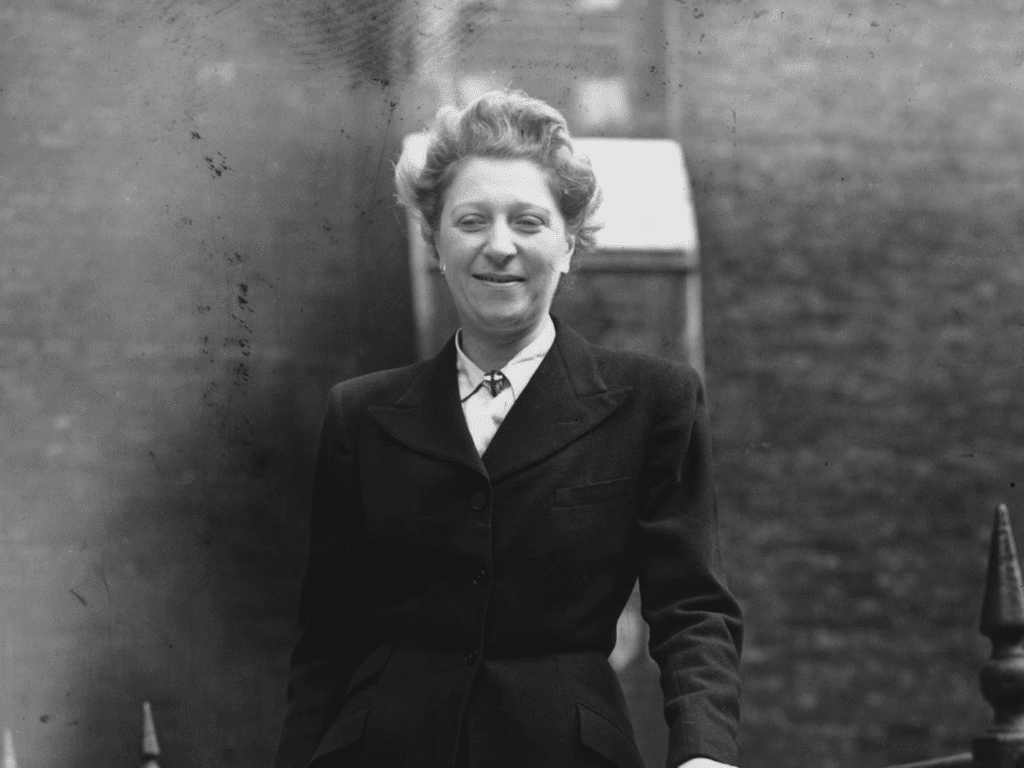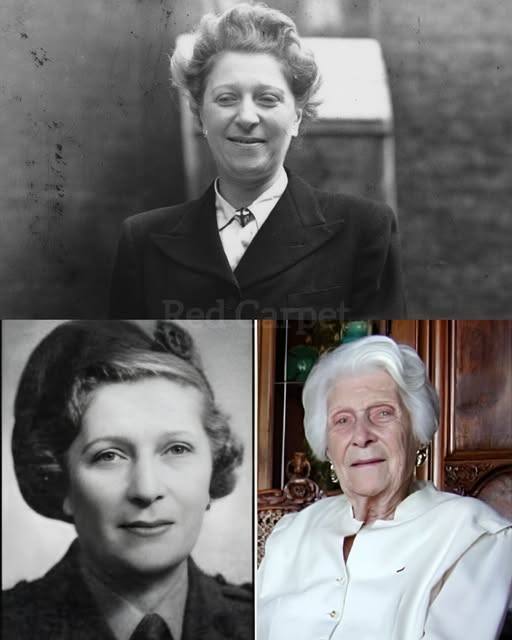In the world of war heroes, some are remembered for their loud, explosive acts of bravery, and others for the quiet, unnoticed acts that shift the tide of history. Lise de Baissac, an agent of the Special Operations Executive (SOE) during World War II, exemplifies this second kind of heroism.
Her story is not one of dramatic speeches or public recognition, but of quiet, unyielding courage—a woman who, through subtlety and stealth, became a critical force in the fight against Nazi tyranny.

The Unassuming Beginning
Born in 1905, Lise de Baissac’s early life was far removed from the violence and peril that would later define her. A woman of grace, with a strong sense of duty and an unwavering commitment to her cause, Lise’s path to espionage began unexpectedly. In 1942, as Nazi forces tightened their grip on Europe, the British government needed agents who could infiltrate enemy lines, gather intelligence, and sabotage vital infrastructure.
Lise de Baissac was one of the brave souls who volunteered for such a mission. She wasn’t a soldier in the traditional sense—no heavy artillery, no battlefields. Instead, she was chosen for her ability to blend in, to use her quiet intelligence, and to work behind enemy lines in a way that few others could. Her mission was not to fight in the open, but to fight in the shadows.
A Woman in Nazi Territory: The Mask of Madame Irene Brisse
Lise’s first parachute drop into Nazi-occupied France came in September 1942. As she landed on the cold French soil, she assumed the identity of Madame Irene Brisse, a widow with a passion for archaeology. With a bicycle and a sketchbook, she became just another harmless woman cycling through the French countryside. To any casual observer, she was nothing more than a tourist—someone lost in the ruins of ancient French civilization.
But beneath that quiet exterior, Lise was anything but harmless.
In her basket, there were no sketches of Roman ruins. Instead, there were coded messages, maps, and detonators, all pieces of a much larger puzzle. She was planting the seeds of resistance, building a network of fighters who would challenge the Nazi occupation. Her work with the French resistance, code-named the “Artist Network,” slowly grew, starting with a few brave souls and eventually expanding to hundreds of fighters. They were given the tools, the training, and the courage to sabotage the German war machine from within.
One of Lise’s primary contributions was her ability to blend into the German-dominated cities without arousing suspicion. She knew that the best place for resistance to thrive was in plain sight. “They never look for fire inside ash,” she once remarked, underscoring her belief in the importance of subtlety and patience in warfare.

The Quiet Saboteur: A Nazi Commander’s Tenant
Perhaps the most audacious of her acts occurred when she rented a room from a Nazi commander in occupied France. This move might sound reckless, even suicidal, but it was, in fact, a masterstroke of espionage. By living under the same roof as a high-ranking German officer, Lise had access to vital information that she could glean through everyday conversation and observation.
Her days were spent serving tea to the enemy, gathering intelligence about troop movements and strategies under the guise of a polite and harmless tenant. Each morning, she greeted her landlord with a pleasant smile; each night, she would disappear into the shadows, using the information she had gathered to sabotage the German war effort. She was, in a sense, the perfect spy—one who operated not in the shadows of darkness, but in the mundane rhythms of daily life.
Through her efforts, she delayed German reinforcements from reaching Normandy during the pivotal D-Day invasion. Her intelligence reports, sent via clandestine networks, played a crucial role in disrupting the movement of troops and supplies. Lise’s quiet acts of sabotage—blown-up bridges, derailed trains, and exploded fuel depots—sowed chaos in the heart of the Nazi war machine.

A Life Built on Silence, But Not for Glory
Lise de Baissac’s heroism wasn’t recognized on the battlefield. She wasn’t awarded medals on the frontlines, and her name wasn’t shouted from rooftops. After the war, she returned to civilian life, quietly planting flowers in gardens where she had once planted bombs. But in the hearts of those who fought alongside her, she was a hero—a woman who had proven that courage wasn’t always loud. Sometimes, the greatest acts of bravery come from those who work in silence, away from the limelight, leaving an impact that is felt long after the war has ended.
Her contributions did not go unnoticed in the corridors of power, however. She was awarded the MBE, Croix de Guerre, and the Légion d’honneur for her role in the war effort. But these honors were never what mattered most to her. For Lise, the true recognition came from the people she helped, the resistance fighters she trained, and the hundreds of lives that were saved because of her courage and resourcefulness.
In her later years, Lise’s legacy was quietly cemented in the stories shared by those who had known her. They would speak of her as a woman who was “one of us”—not a hero in the traditional sense, but a symbol of everything that was brave, steady, and unbreakable about the resistance.

The Legacy of Lise de Baissac
Lise de Baissac’s story is a testament to the unsung heroes of World War II, especially the women whose contributions were often overlooked. Her bravery and commitment remind us that heroism is not always defined by grand gestures or public acclaim. Instead, it is often the quiet, relentless persistence of individuals like Lise who make the most profound difference.
She proved that courage is not always loud. It doesn’t demand attention. It doesn’t seek applause. It is simply a deep, unshakable resolve to do what is right, no matter the cost. For Lise de Baissac, that resolve carried her through one of the most dangerous and pivotal times in history—and it led her to become a true hero, even if the world never fully understood her impact.


